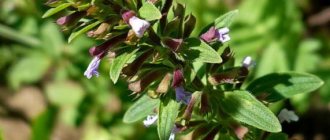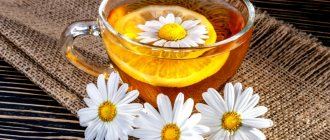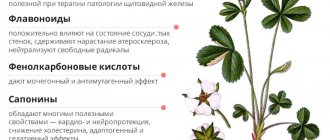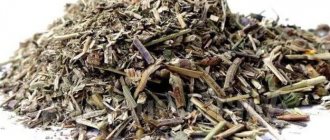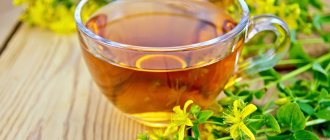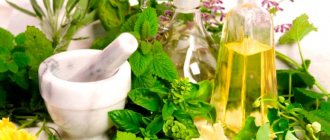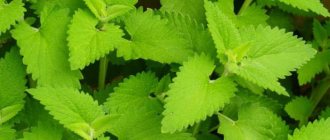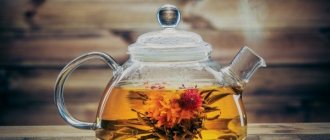Many fans of the art of tea cannot imagine their day without a cup of tea - an aromatic, invigorating and tasty drink that warms on cold days and refreshes on hot days. They are ready to drink tea at breakfast and dinner, after lunch and simply in the company of loved ones. Moreover, both traditional tea and drinks with various herbal additives are equally popular. Without a doubt, they will also enjoy lemon balm tea. Many people confuse mint and lemon balm, but meanwhile, these two herbs are considered close relatives and have similar qualities.
Description of lemon balm
Melissa is a well-known herbaceous essential oil plant, known to many as lemon balm. This name clearly characterizes the taste and aroma of the plant, which in appearance resembles mint, but in taste and aromatic qualities - mint and lemongrass. Thanks to this specific refreshing bouquet, it is difficult to confuse it with any other plant. She is a representative of the Lamiaceae family, and belongs to the category of medicinal plants. In folk and official medicine, lemon balm has been successfully used for more than 2000 years. Nowadays, it has found application in cooking, cosmetology and aromatherapy.
Most often, green tea with lemon balm is prepared from the plant, which has calming, antidepressant, anti-inflammatory and other healing properties. It is considered a gourmet drink, while remaining a source of vitamins. That is why doctors advise drinking lemon balm tea all year round, especially during the cold season, when the body experiences an acute lack of vitamins and minerals.
Tasty and healthy tea can be consumed both as a regular drink and as a medicine. It increases appetite, improves the functioning of the gastrointestinal tract, and calms the nervous system.
Video: beneficial properties of lemon balm
Lemon grass, lemon aroma, lemon mint - this is what lemon balm is popularly called, the medicinal properties and contraindications of which are described below. This miraculous plant has been used in alternative medicine since ancient times. It has been and continues to be used as a spicy, medicinal, essential oil, and melliferous plant. The Latin name of the genus Melissa is derived from the Greek word bee. This is due to the fact that the plant strongly attracts working women.
There is even a legend according to which Melissa was a nymph, the daughter of King Melisseus. She fed Zeus honey and milk and wanted to teach people how to extract honey. Another legend says that Melissa had extraordinary beauty, which, of course, the goddesses did not like, which is why they turned her into a bee.
Ancient medicine attributed antimicrobial, antiseptic, sedative and antidysenteric properties to the plant. The plant was used to improve vision and normalize the menstrual cycle. Avicenna recommended using the plant for the treatment of diseases of the cardiovascular system and gastrointestinal tract.
Today, lemon balm has no less widespread use. It is valued in cosmetology, cooking, aromatherapy and, of course, informal medicine.
Application in cosmetology, aromatherapy, cooking
The essential oil of the plant is used to treat gastrointestinal pathologies caused by stress. It has powerful antiviral properties and is used to normalize heart rate, lower blood pressure, normalize sleep, minimize the symptoms of menopause, eliminate itching, burning and swelling from insect bites.
Moreover, oil is a component of homemade cosmetics and all kinds of skin care products. It is also used in the perfume industry to flavor waters, creams and lotions.
The dried leaves of the plant are used to flavor teas. Salad made from fresh young leaves is part of the therapeutic diet. Melissa is used to make excellent seasonings for all kinds of dishes. The plant is often used to prepare liquor and vodka products.
Melissa is an excellent and valuable honey plant. Melissa honey has a very pleasant aroma and taste and is one of the best varieties.
Botanical characteristics
Melissa is a perennial herbaceous plant of the Lamiaceae family, reaching a height of fifty centimeters or more. Lemon grass is equipped with an erect, branched, tetrahedral stem, petiolate, opposite, heart-shaped, coarsely toothed leaves, covered with soft hairs, and small, pale pink or white flowers located on short stalks.
Melissa blooms in the second year of life in the middle of summer. The fruits of the plant consist of four brownish ovoid nuts. Melissa's homeland is the Mediterranean. The plant was grown several thousand years ago in Ancient Rome, from where it spread throughout the rest of Europe.
In Mediterranean countries, the plant is considered a weed. Shady shrubs, open forests, rocky and grassy areas, forest meadows, river banks, roadsides are places where grass grows. The Caucasus, Crimea, Central Asia, Ukraine, Russia are the habitat of lemon balm.
Collection and preparation
The tops of shoots and foliage of the plant are used to make preparations. It is recommended to collect and prepare raw materials at the beginning of flowering. Next, the raw materials are dried in the open air, preferably under a canopy or in a dryer with sufficient ventilation at a temperature not exceeding forty degrees.
After drying, the workpieces are placed in paper bags or bags for further storage. In one season you can get two or more harvests. Collecting herbs in order to reduce the loss of essential oils is best done at noon and preferably in cloudy weather. You can store the blanks for a year, no more.
Melissa - medicinal properties and contraindications, composition
Lemon grass is a storehouse of beneficial and healing properties. And all this thanks to its composition. The plant contains a significant amount of:
- essential oils;
- triterpene compounds (citral, citronellal);
- monoterpene compounds (linalool, cetronellol, geraniol);
- carotene;
- ascorbic acid;
- mucous substances;
- tannins;
- caffeic, rosemary, oleic, ursolic acids;
- bitter substances;
- flavonoids;
- fatty oils;
- macro- and microelements: calcium, potassium, iron, manganese, zinc, chromium, copper, molybdenum, nickel, vanadium.
The rich composition gives plants a whole arsenal of healing properties. Melissa has antispasmodic, sedative, hypnotic, sedative, carminative, choleretic, hypoglycemic, astringent, anticonvulsant, expectorant, tonic, diuretic, antiviral, antimicrobial, anti-inflammatory, antioxidant and antiallergic effects.
Preparations based on lemon balm help:
- increased appetite;
- stimulating the secretion of gastric juice;
- elimination of fermentation anomalies;
- increased gastric motility;
- decrease in heart rate;
- eliminating bad breath;
- lowering blood pressure;
- activation of the intrasecretory function of the thyroid gland;
- normalization of the menstrual cycle;
- therapy of nervous disorders, migraines, insomnia, painful menstruation, neuroses, ischemic heart disease, dyskinesia, flatulence, dysbacteriosis, dermatitis, eczema, trophic ulcers, toxicosis, rheumatism, atherosclerosis, hypertension, bruises, oral ailments, epilepsy, anemia, gout, cholecystitis , pyelonephritis
Folk recipes
Making soothing tea
Take a few spoons of dried crushed leaves of the plant and pour into a thermos. Brew the raw material with boiled water – 1.5 cups. Leave the mixture to sit for an hour. Drink a cup of tea three times a day. When a small amount of honey is added to tea, its hypnotic effect is enhanced. The drug can be taken to eliminate headaches, dizziness, as well as normalize the functioning of the gastrointestinal tract.
Kidney pathologies: infusion therapy
Steam three spoons of dry leaves of the plant in five hundred milliliters of boiled water. Let the product brew. It is recommended to consume half a glass of the filtered drug three times a day.
Tinnitus Therapy
Pour fifteen grams of fresh, finely chopped lemon balm herb with vodka - 50 ml. Close the container tightly and leave the composition to brew in a dark, cool place for a week. Next, the product must be filtered through several layers of gauze. Place three drops of the product in each ear, preferably before going to bed.
The use of healing baths
Steam fifty grams of raw materials with boiled water - a liter. The product must infuse. After filtering, pour the composition into the bath. It is recommended to take a bath before bed.
Viral diseases: treatment with essential oils
Combine a few drops, no more than three, with a small amount of natural honey. Pour boiling water over the mixture. Lean over the container, cover yourself with a towel and breathe in the steam until the water cools.
Melissa essential oil for the treatment of headaches and nervous tension
Place a few drops of oil, but no more than five, into a bathtub filled with hot water. The duration of the procedure is half an hour. If desired, you can combine lemon balm oil with peach oil.
Collection for the treatment of cardiovascular diseases
Mix lemon balm in equal proportions with hawthorn fruits, nettles, blackberry leaves, lavender, hops, adonis, and elderberry. All ingredients must be thoroughly chopped and mixed. Brew two tablespoons of the mixture with just boiled water and leave to brew for a couple of hours. Drink 100 milliliters of the filtered drug three times a day.
Making cleansing tea
The product has cleansing properties, helps normalize metabolic processes, reduce body weight, and improve skin health. Combine dry lemon balm leaves with rose hips, rose petals, horsetail, and yarrow in equal quantities. Grind the ingredients and steam three tablespoons of the raw material with boiling water - half a liter. Leave the mixture to sit for three hours. Take half a glass of filtered drink at least three times a day.
Preparation of a drug that helps strengthen the immune system
The product, with long-term use, helps to increase the body's defenses. Combine dried crushed lemon balm leaves in equal proportions with hawthorn, barberry fruits, hazel leaves, thyme, blackberry leaves, St. John's wort, nettle, horsetail, oregano, hyssop, fireweed. Brew thirty grams of the mixture with boiled water - half a liter, let it brew. Drink a glass of strained product twice throughout the day.
Performance enhancing drug
Mix 10 grams of lemon balm with the same amount of rose hips, rose petals, blackberry leaves, calendula, thyme, fireweed. All ingredients must be pre-dried and crushed. Brew 20 grams of raw material with boiling water - 300 ml. Leave the product to sit for an hour, then strain. It is recommended to consume 50 ml of infusion four times a day.
Contraindications!
It is not recommended to use the plant for medicinal purposes in the presence of arterial hypotension and allergies. It is not advisable to take products from the plant during pregnancy and breastfeeding. Despite the usefulness of the herb, you should not abuse medications based on it and exceed the dosages indicated in the recipes. Be vigilant and take care of your health.
Date of publication: contraindications
Benefits of lemon balm tea
Melissa, popularly known as queen grass, honey grass, lady grass and heart grass, fully reflects the full range of beneficial qualities. It has been proven that the properties of lemon balm are perfectly preserved in tea. So, with the help of herbal tea from lemon balm you can solve the following problems:
- improve the body's protective functions;
- relieve headaches, migraines;
- normalize the functioning of the nervous system;
- normalize sleep;
- eliminate stressful conditions;
- normalize the functioning of the gastrointestinal tract;
- increase the tone of the body.
The benefits of healing tea with lemon balm have been proven for arthritis, rheumatism, and thrombophlebitis. Thanks to its beneficial properties, it alleviates heart disease, relieves tachycardia, and normalizes blood pressure. The properties of tea have been used in the fight against colds and viral infections, in particular herpes, measles, and influenza. Green tea with lemon balm, the benefits and harms of which have not yet been fully studied, helps fight vegetative-vascular dystonia, neuroses and stress.
What else is lemon balm useful for in tea?
- the ability to heal wounds, abrasions and other skin damage;
- alleviate asthma conditions by relieving attacks;
- relieve spasms, restoring normal state.
The benefits of green tea with lemon balm have also been proven for vascular diseases and heart rhythm disorders. Considering all of the above advantages of the plant, one should ask the question: “Is it possible to give tea with lemon balm to children?” Plant-based formulations for children are recognized as safe and effective, therefore they are successfully used for neuroses, insomnia, and hysterical conditions.
With pronounced therapeutic properties, the benefits of tea for women have been proven. It strengthens women's health, easing the condition of serious illnesses. With regular consumption of the drink, the color and quality of the skin improves and the body is cleansed. Experts have also proven the benefits and harms of lemon balm tea, even for men.
Tea with mint and lemon balm
Daily addition of lemon balm or mint to tea leaves will help normalize metabolism, normalize the functioning of the nervous system and improve the quality of sleep. But at the same time, professional herbalists advise paying attention to some important points.
Firstly, tea with lemon balm and mint should be drunk in courses - three months with the same break period, and not uncontrolled. Moreover, it is best to drink this drink before bed, because it has a pronounced calming and relaxing effect.
Tea with mint and lemon balm is very useful to drink in spring and autumn, as it helps treat colds and fight vitamin deficiency. Add a few leaves of dried or fresh mint and lemon balm to your black tea.
Melissa and mint without black tea, brewed with a glass of boiling water, will help calm your nerves.
People suffering from gastritis with low acidity of gastric juice should definitely add a slice of lemon to this drink.
Contraindications
The benefits and harms of lemon balm tea have been discovered and studied in the distant past. However, it is not without reason that doctors advise moderation in everything. Abuse of the drink can lead to health problems. It has been proven that tea has a number of contraindications for people suffering from:
- hypotension;
- vegetative-vascular dystonia;
- disturbances in the functioning of the central nervous system;
- stomach and duodenal ulcers.
Despite the wide range of medicinal properties, tea is contraindicated for people with hypersensitivity to individual components of the plant. People whose professional activities require increased concentration of attention should treat the drink with caution.
How to prepare and store
The mother plant is considered an unpretentious plant, so it feels equally comfortable in the wild and in the garden. Many housewives try to prepare useful herbs for the winter for tea, as well as for use for medicinal purposes. Its reserves allow not only to enrich the taste of tea in winter, but also to compensate for the deficiency of nutrients.
There are several generally accepted rules for preparing lemon balm for the winter and for making tea.
- The grass should be collected in June during the period of biological maturity.
- The leaves and stems of the plant are suitable for harvesting.
- Grass should be collected in dry, clear weather in the first half of the day.
- Rinse the collected raw materials in running water and spread them in a thin layer on a flat, wide surface, or collect them in thin bunches and hang them.
- Air dry in the shade or in a well-ventilated area.
- Dry herbs should be stored in sealed glass containers.
Properly prepared raw materials restore their aroma to tea and give the drink a rich taste.
Where is the best place to carry out the process and how correctly?
You can dry the crop outdoors or indoors . On the street, lemon balm is laid out in the shade on a tray in a thin layer. Instead of a pallet, use a sheet of plywood or cardboard. The top of the lemon balm is covered with a net or natural fabric to protect it from insects and dust. You can hang the bundles on a rope under a canopy.
You cannot leave lemon balm under the sun, otherwise it will lose all its beneficial properties.
The main conditions for drying indoors are good air circulation and protection from sunlight. The attic is perfect for this purpose.
In bundles
How to dry it at home:
- Choose a dry, warm, shaded room where air circulates well.
- Cut off several young stems with leaves and flowers.
- Take no more than 10 stems and gather them into a bunch.
- Do not tie it too tightly with thread or rope.
- Hang the bunches from the ceiling with the tops down.
Do not collect bunches that are too large. The stems inside the bundle may rot or become moldy.
Advantages of the method:
- There is no need to occupy horizontal surfaces for drying raw materials.
- Melissa retains a large number of useful components.
Flaws:
- It can only be used when the leaves are not separated from the stems.
- Plants need to be inspected regularly and leaves that have deteriorated should be removed.
On a horizontal surface
- Choose a dry, warm place with good access to fresh air and no direct sun.
- Spread white paper or a clean cloth on the surface.
- Spread a thin layer of lemon balm on top.
- Drying takes on average 3–4 days. It is necessary to stir and turn the raw materials daily so that they do not begin to deteriorate. Inspect for mold and black spots.
Instead of a pallet, it is convenient to use hammocks made from mesh. This device does not interfere with air circulation. No need to stir up the grass.
Advantages:
- Melissa dries quickly - from 2 to 7 days.
- With the natural drying method, most of the beneficial substances are preserved.
Flaws:
- Need a lot of space.
- It is necessary to constantly monitor the condition of raw materials.
In the oven or special apparatus
In the oven
- Spread the chopped lemon balm on a baking sheet in a thin layer.
- Keep in a slightly preheated oven at 45-50° for 2-3 hours. Leave the door ajar. Stir the lemon balm periodically.
In an electric dryer
- Place the chopped raw materials in trays in a thin layer.
- Set the temperature to 30°.
- Dry for 2–2.5 hours.
In the microwave
- Spread the leaves in a thin layer on a cotton cloth.
- Cover the top with the same material.
- Place on a plate in the microwave.
- Turn on the device for 2 minutes.
- Remove the raw materials and keep them in the room for one day.
Experts do not recommend drying lemon balm in ovens. At temperatures of 35° and above, useful substances in raw materials are destroyed.
Advantages of the method:
- This method saves time on drying.
- There is no need to allocate a special place, lay out and check the raw materials.
Disadvantage: a large proportion of nutrients are lost. The quality of the raw materials is lower than when dried in the open air.
Melissa tea during pregnancy
Doctors can recommend lemon balm tea to women during pregnancy. Providing a sedative and hypnotic effect, it relieves irritability, nervousness and minimizes mood swings. During pregnancy, tea often relieves symptoms of toxicosis and helps with nausea.
Tea is no less useful for women who are breastfeeding, as it improves lactation, as well as for infants. Tea with lemon balm is recommended for children if they are hyperactive. All the beneficial substances contained in the drink are passed on to the baby through the mother's milk. He is no longer tormented by colic, insomnia, tearfulness and irritability. A nursing mother can drink tea if she is not allergic to the components of the plant. Therefore, doctors usually allow pregnant women to drink lemon balm tea.
Melissa for weight loss
Very often, overweight women resort to green tea with lemon balm as a means of losing weight. Indeed, by drinking up to 1 liter of drink a day, you can quickly lose several kilograms. In combination with diet and exercise, the effectiveness of this process will increase noticeably, but the drink will benefit if it is brewed correctly. Tea should be prepared using one of the known methods, but it is recommended to drink it without adding sugar or honey.

